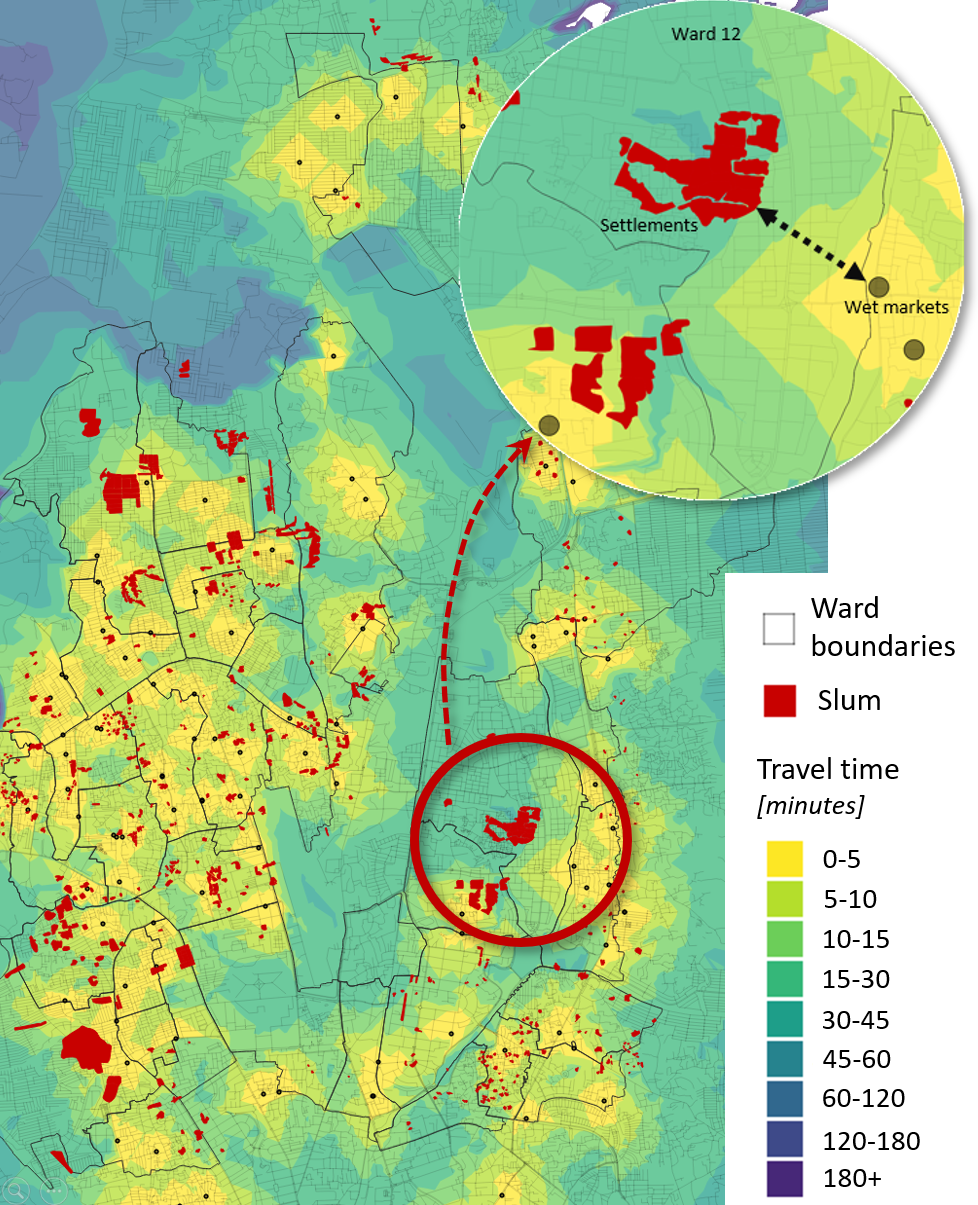Bustling with sounds and a wide variety of smells, the wet-markets of Dhaka are the most important community places for a wide variety of affordable fresh food items. Wet-markets are the primary and the most popular food distribution points for the majority of Dhaka’s residents. For the urban poor, wet-markets are often the only distribution point for accessing fresh food at an affordable price. Though wet-markets are crucial for communities’ access to food, the level of access to the wet-markets is not equal for all communities.
The poor do not have the means to preserve food (e.g. a fridge). Thus every day, they must make the trip to an affordable wet-market for a small amount of relatively fresh food. The map shows the walking distance in minutes from the slums to the nearest wet markets. The preferred time for a one-way trip is five to ten minutes. For some areas, the actual required time it takes a person to visit their nearest wet-market can amount to as much as two hours one way.
Communities without any wet-market in their vicinity have two choices- spend additional money for transport to get to the nearest wet-market or depend on the mobile vendors for their food supply. On average, an urban poor family spends around 50% of their monthly income on food. Therefore, it is nearly impossible for them to spend additional money on transportation. The realistic option for the poor is to buy low-quality food from mobile vendors at a higher price.
Sources
- Nadimpalli, M. L., and Pickering, A. J. (2020). A call for global monitoring of WASH in wet markets. The Lancet Planetary Health, 4(10), e439-e440
- Unicef
